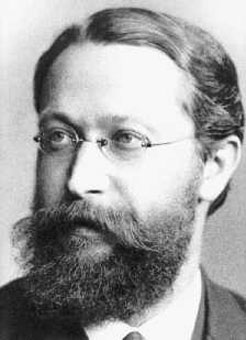| Ferdinand Braun  AKA Karl Ferdinand Braun AKA Karl Ferdinand Braun
Born: 6-Jun-1850
Birthplace: Fulda, Hesse-Kassel, Germany
Died: 20-Apr-1918
Location of death: Brooklyn, NY
Cause of death: Illness
Remains: Cremated, Old Cemetery, Künzelerstr., Fulda, Germany
Gender: Male
Race or Ethnicity: White
Sexual orientation: Straight
Occupation: Physicist Nationality: Germany
Executive summary: Rectifier effect in semiconductors German physicist Karl Ferdinand Braun, who never used either his first name or first initial, discovered the principle of crystal diode rectification in 1874 as he invented the lead sulfide-based point contact rectifier. Originally envisioned by Braun as a method to establish electrical contact with minerals to further his investigation of electrolysis, his point-contact rectifier effect formed the foundation of modern solid-state electronics, but he did not patent this work until decades later, as the potential of its adaptations became more clear.
In 1897 he invented the Braun tube, a cathode-ray canister that deflects electron beams by changing the voltage, as part of his cathode-ray oscillograph, which later became a basic component of the television receiver. Beginning in 1898 he worked on wireless telegraphy, trying to improve Guglielmo Marconi's transmitter for sending Morse code signals through air and water. He patented the crystal rectifier in 1899, which led to J. C. Bose's work with crystals in radio detection and the advent of "cat's whisker" crystal radio sets. In 1902 he successfully used closed circuit oscillation to send and receive directionally-targeted wireless telegraphy. For their work in electronics and radio, Braun and Marconi shared the 1909 Nobel Prize for Physics.
Braun also investigated the oscillations of elastic rods and strings, deviations from Ohm's law, and studied magnetic compounds and the thermodynamic principles governing the pressure and solubility of solids. He spent more than twenty years teaching at the University of Strassburg, where his students included the future physician and humanitarian Albert Schweitzer.
In 1917 Braun came to America to provide testimony in a court case involving radio patents. While he was in New York seven American merchant ships were sunk, US President Woodrow Wilson called for a declaration of war, and on 6 April 1917 Congress complied, putting the United States into the thick of the Great War, now called World War I. Braun was already in his mid-60s and effectively retired, but he was deemed an enemy alien and prohibited from returning to Germany. He lived the last year of his life under house arrest at his son's Brooklyn apartment, where he died on 20 April 1918. Father: Konrad Braun
Mother: Franziska Gohring Braun
Wife: Amélie Buhler Lahr (m. 23-May-1885, d. 17-Sep-1917, six children)
High School: Fulda Gymnasium, Fulda, Germany (1868)
University: University of Marburg (attended, 1868-70)
University: PhD Physics, University of Berlin (1872)
Lecturer: Physics, University of Würzburg (1872-74)
Teacher: Science, St. Thomas Gymnasium, Leipzig, Germany (1874-76)
Professor: Theoretical Physics, University of Marburg (1876-80)
Professor: Physics, University of Strassburg (1880-83)
Teacher: Science, Karlsruhe Technical High School, Karlsruhe, Germany (1883-85)
Professor: University of Tübingen (1885-95)
Professor: University of Strassburg (1895-1918)
Nobel Prize for Physics 1909 (with Guglielmo Marconi)
House Arrest 1917-18 (Brooklyn, NY)
Author of books:
Das Buch der neuesten Erfindungen (Book of the Latest Inventions) (1905, non-fiction)
Do you know something we don't?
Submit a correction or make a comment about this profile
Copyright ©2019 Soylent Communications
|